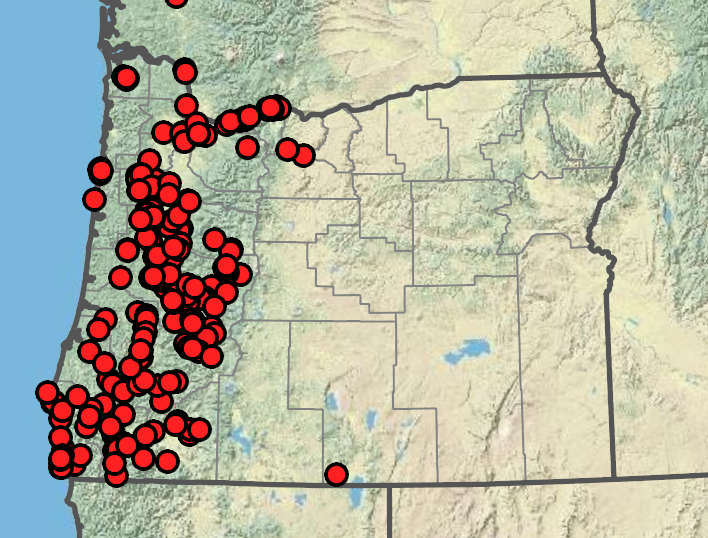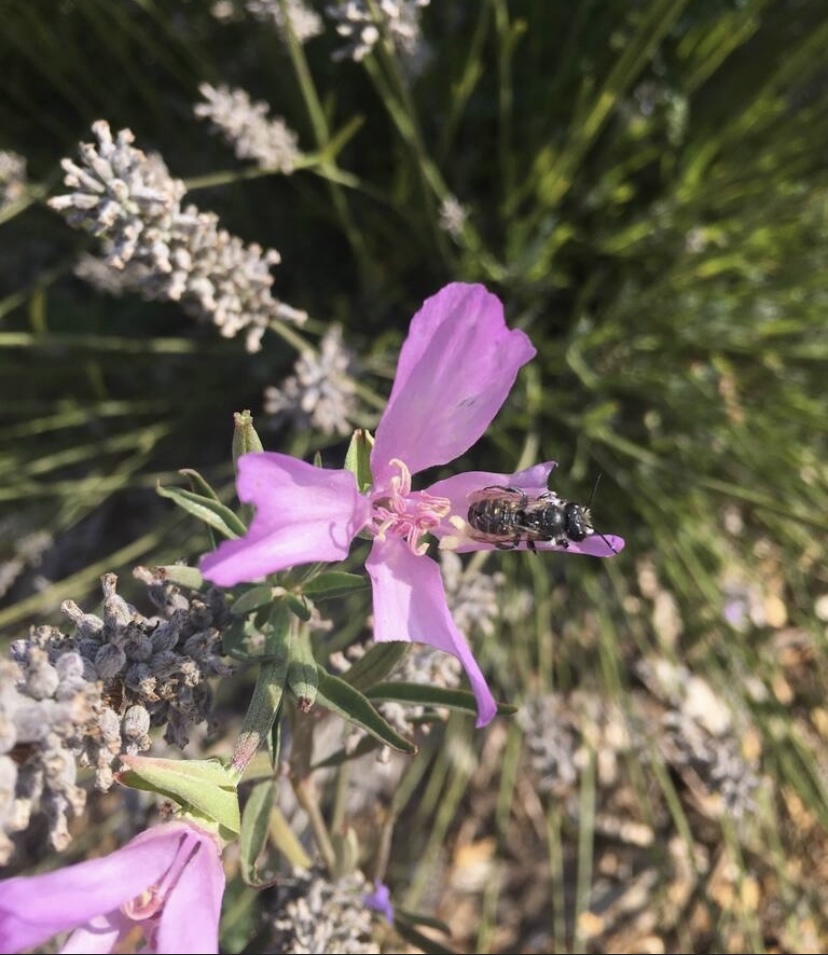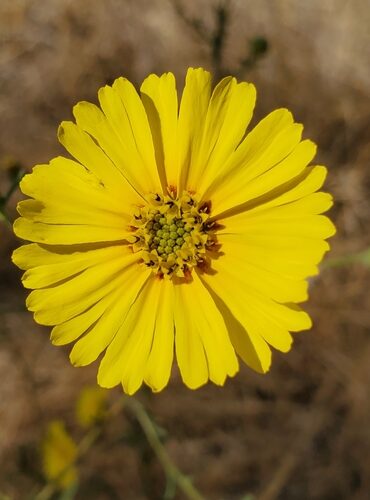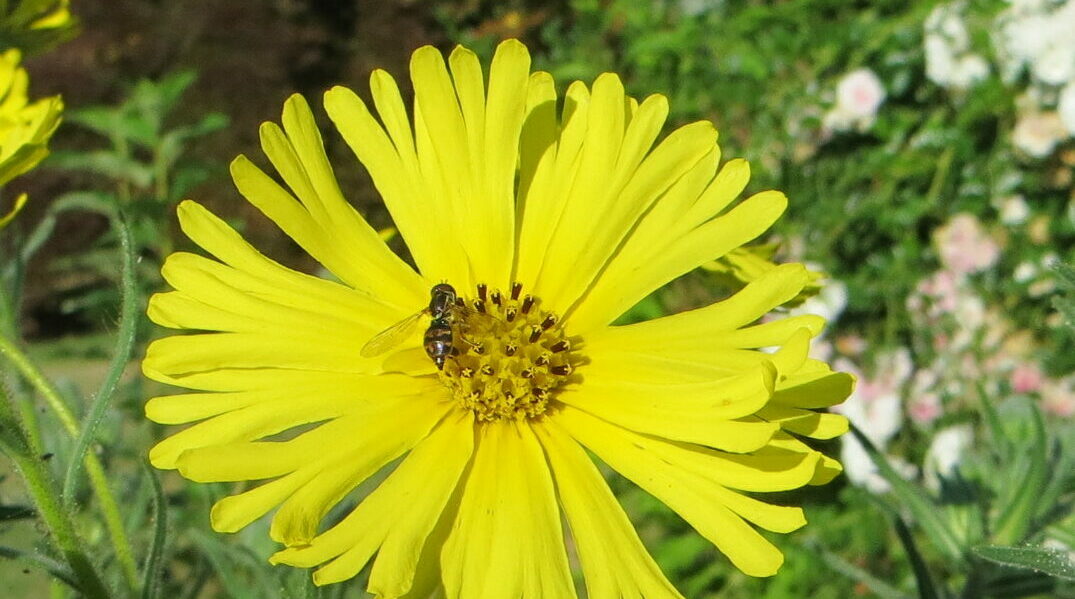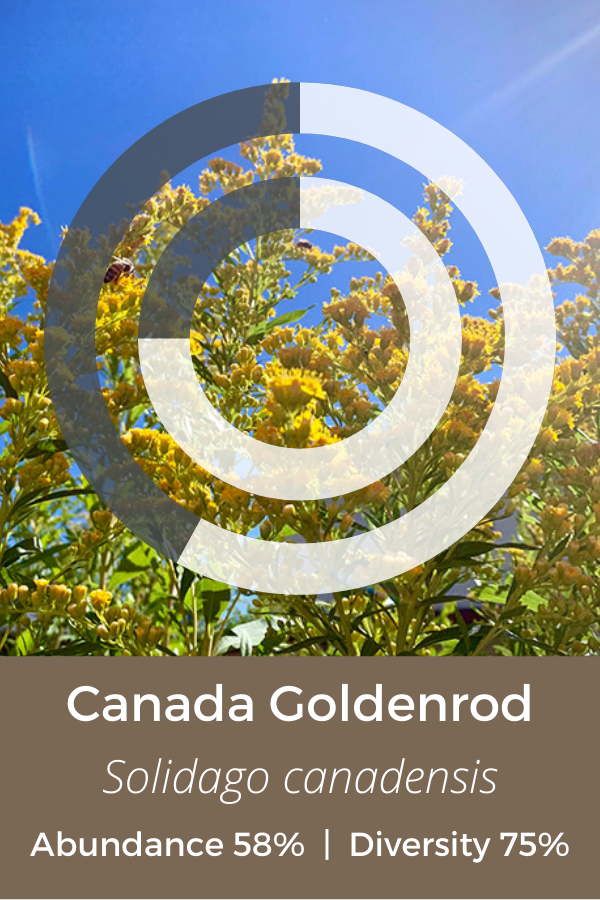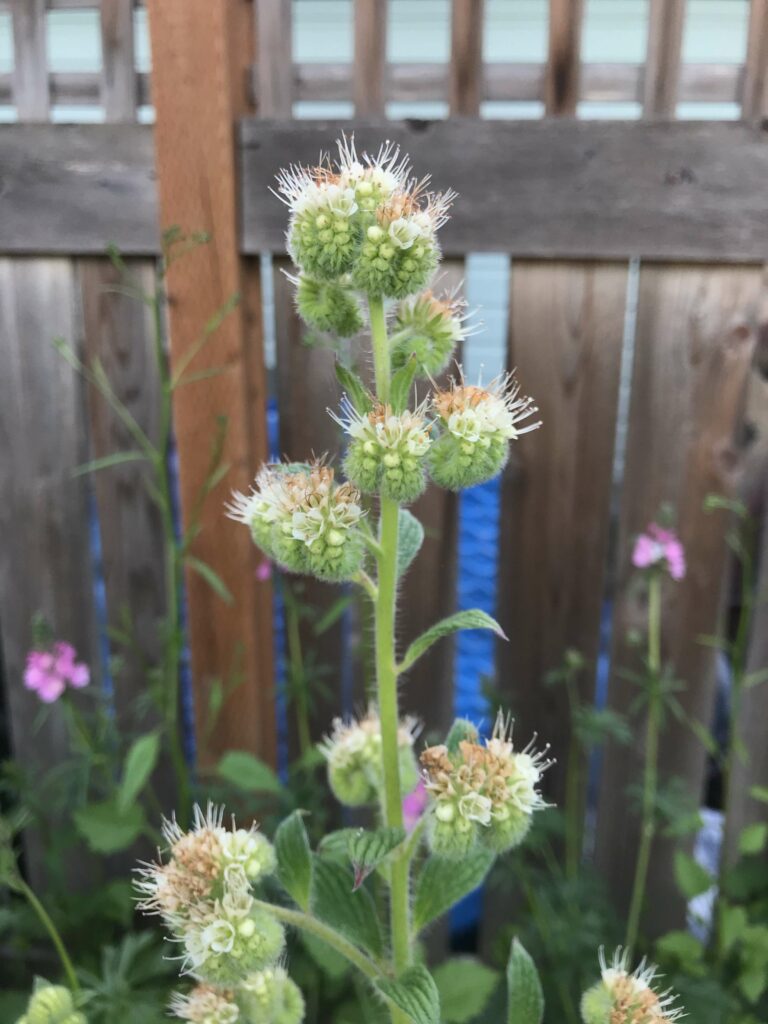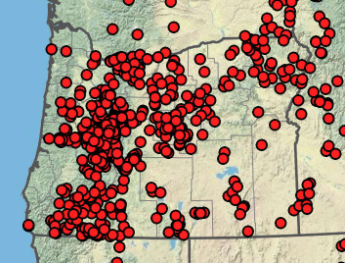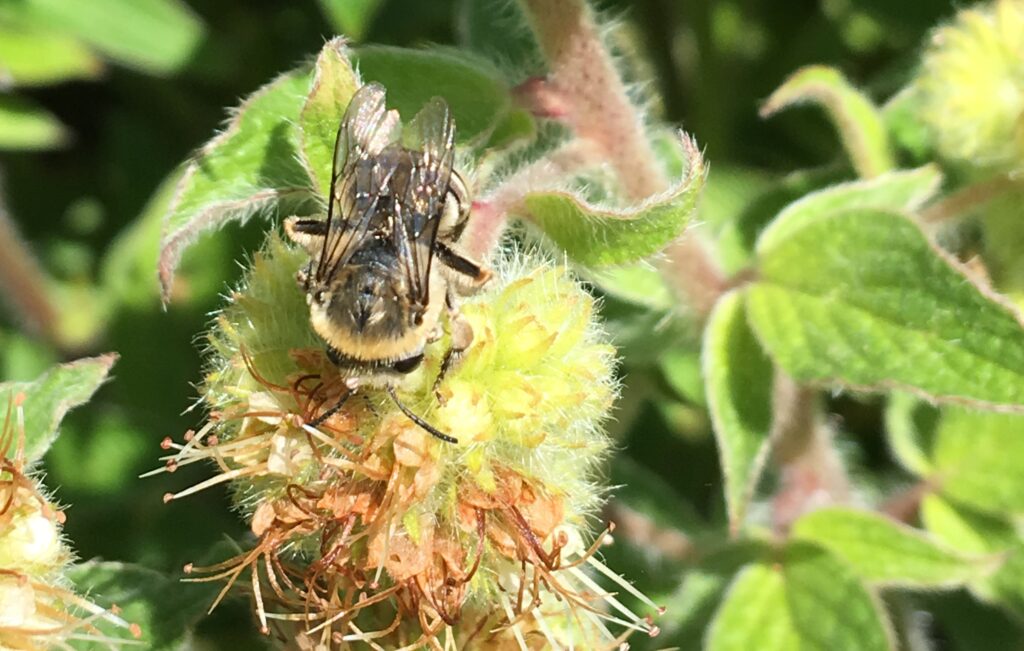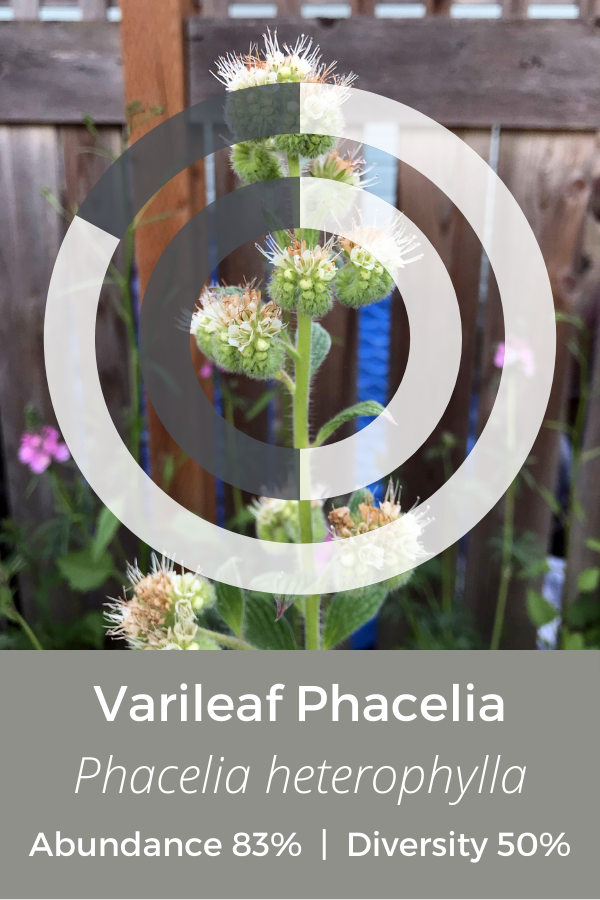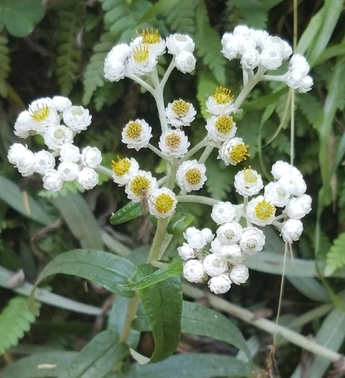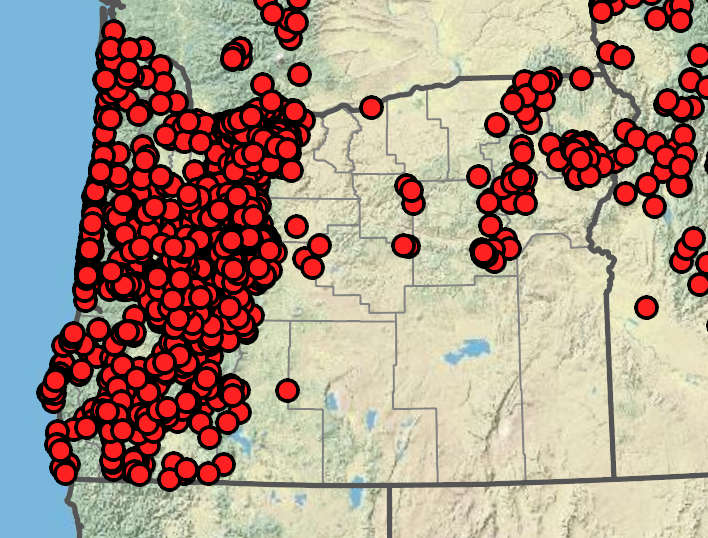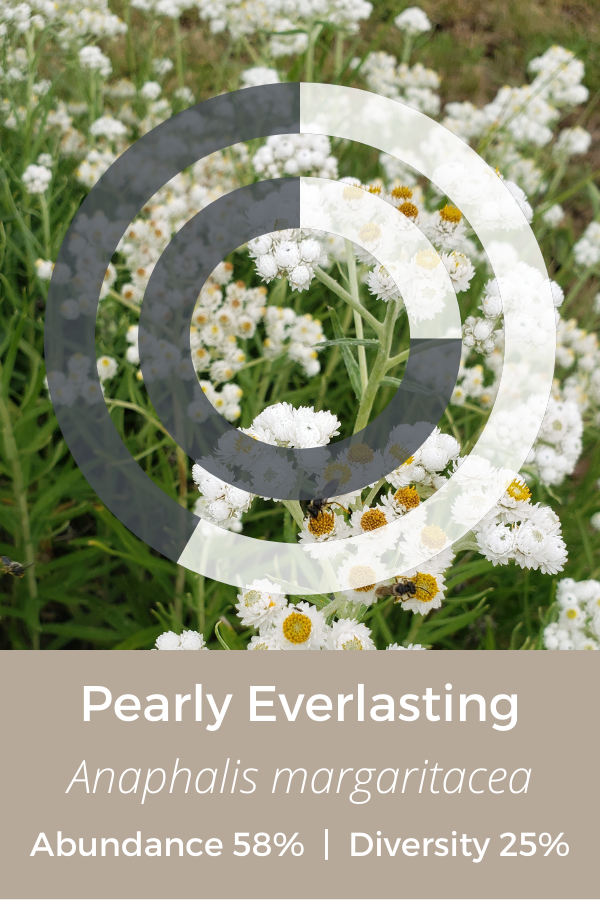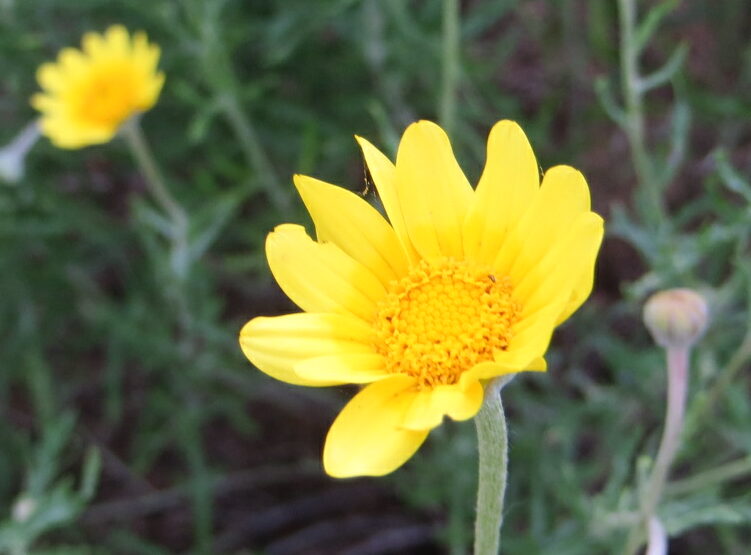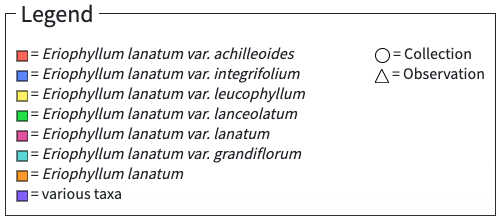The Garden Ecology Lab’s Pollinator Plant PR Campaign Presents….. Douglas Aster!
The Garden Ecology Lab is releasing a series of plant profiles of the top 10 Oregon native plants for pollinators, based on Aaron Anderson’s 2017-2019 field trials of 23 Oregon native plants. We will feature one plant per week for 10 weeks, this is week 10, which marks the end of our 10-week series! Profiles will include photos, planting information, and will highlight common pollinators of each plant.
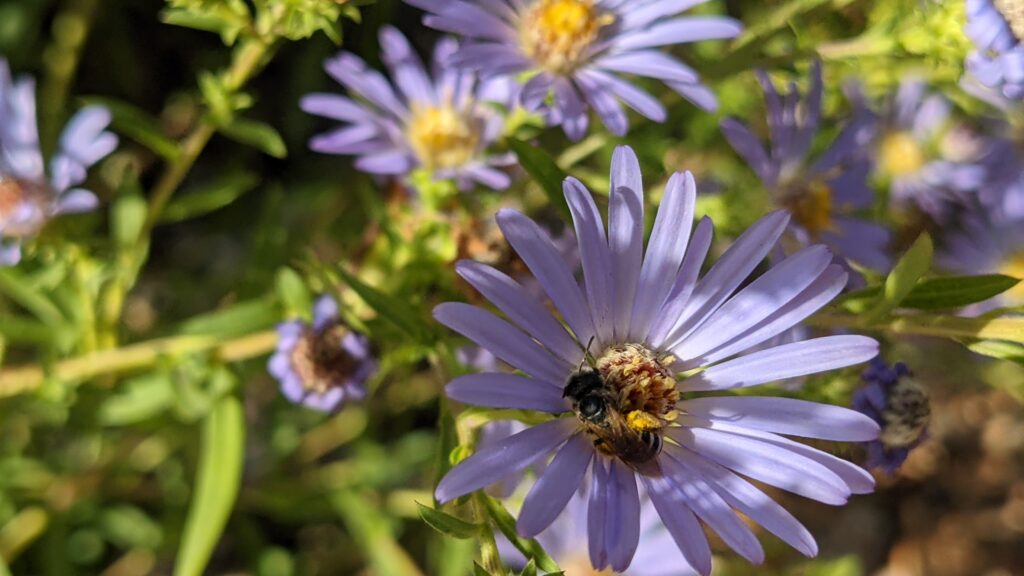
Plant Facts
- Scientific Name: Symphyotrichum subspicatum
- Life Cycle: Perennial
- Growth Habit: Vigorous spreader, spreads through underground rhizomes
- Bloom Duration: July-November
- Hardiness Zone: 6-9
- Special Traits: Drought tolerant, deer resistant
- When to plant: Starts can be planted in the spring or early fall.
Pollinator Facts
- Douglas aster provides both nectar and pollen to its insect visitors.
- Aaron’s research found three species of long-horned bees (Melissodes robustior, M. lupinus, and M. microstictus) and three species of bees from the family Halictidae (Halictus ligatus, Agapostemon texanus angelicus and A. virescens) to be associated with Douglas aster.
- Other common visitors to Douglas aster include syrphid flies and northern checkerspot butterflies! Douglas aster may also be a larval host to 8 different month species1.

Douglas Aster‘s Native Range in Oregon

Douglas aster is native to Northwestern Oregon and most of the coast. Maps and legend acquired from the Oregon Flora Project, with Imagery Sourced from Google. Copyright 2022© TerraMetrics
Douglas Aster as a pollinator plant
Douglas aster is native to Western North American with a range extending from Alaska to California. It has an impressive ability to spread and a high volume of flowers that buzz with pollinator activity throughout its long bloom season. Hosting a high abundance and diversity of bee visitors, Douglas aster is a pollinator plant superstar. It is particularly valuable as a late-season pollinator plant, able to provide both nectar and pollen to its visitors when these resources may otherwise be scarce in the landscape.
People often have strong reactions towards Douglas Aster – they either love it, or find it to be “weedy” in appearance. We hope that this highlight may help some people change their opinions about it! We in the Garden Ecology Lab love Douglas Aster for its abundant blooms in varying shades of purple and for its great capacity for supporting wildlife. In the late summer, we love watching the diversity of pollinators bouncing from one flower to the next! Some common visitors to Douglas Aster that we see at Oak Creek Center for Urban Horticulture include bumblebees, green bees, long-horned bees, small sweat bees, and butterflies, including the woodland skipper (pictured below) and the occasional grey hairstreak (Strymon melinus).
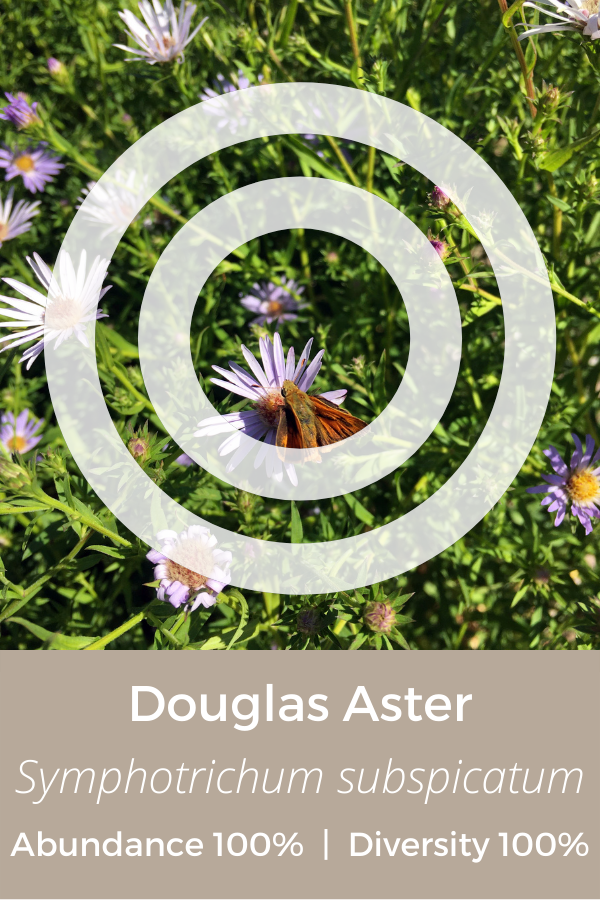
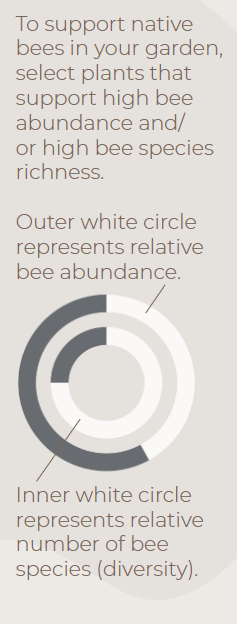
Infographics developed by LeAnn Locher, Aaron Anderson, and Gail Langellotto.
Did you know?
By mid to late summer, Douglas aster is quite the frenzied pollinator feeding ground, making the Oak Creek team’s sampling effort always a bit of a challenge. These photos are from 2 years after these plants were established, so you can see just how full these young plants can get when grown in favorable conditions!
At Oak Creek, we started all of our Douglas Aster plots with 4x 4″ pots, planted in the spring of 2020. As you can see in the photos below, they easily filled up their 1×1 meter beds! If you’re worried about Douglas Aster taking over your garden, consider starting with a single plant and observe it over the season to see how it reacts to your garden environment. Aggressive spreaders can be used to fill spaces such as borders with forest edges or along fences where low maintenance plants are key. If you want to contain your asters, consider planting some in a large pot or in an area where you can easily control the spread of their underground rhizomes. The purple flowers contrast beautifully with other late season natives, such as goldenrod and Madia.

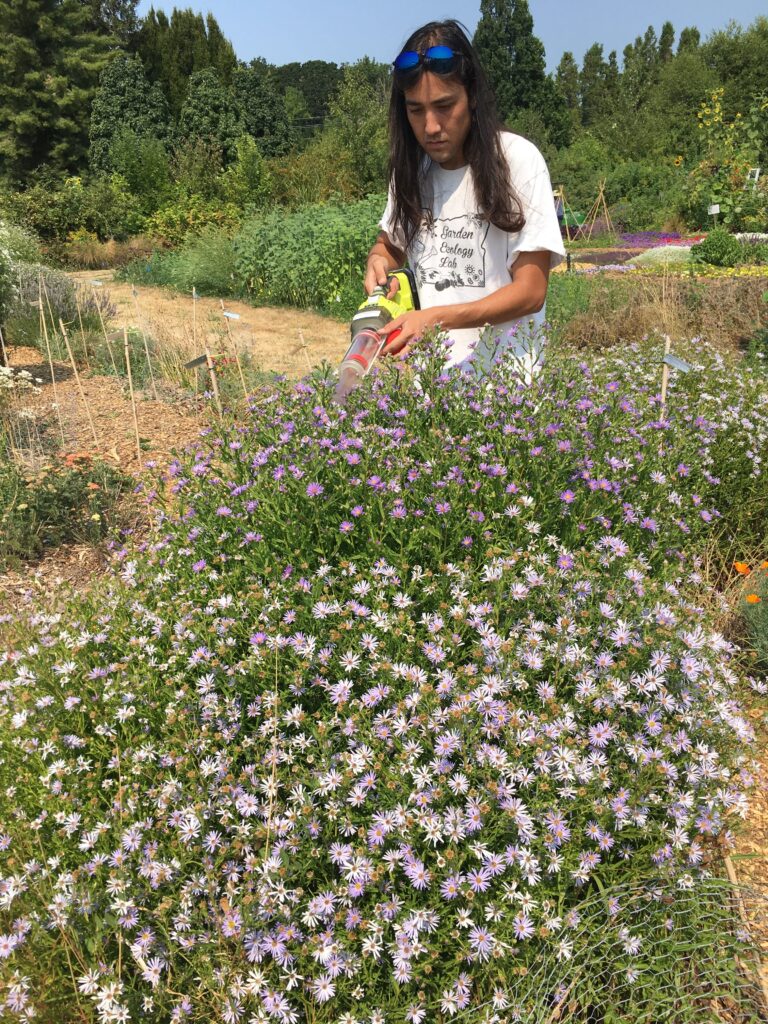
Photos from the field
Thanks for tuning in to the last posting of our Pollinator Plant PR Campaign! We hope you try growing some of these fantastic pollinators plants.

















































